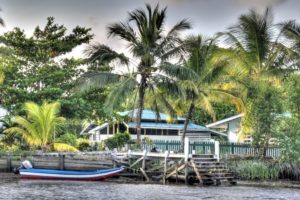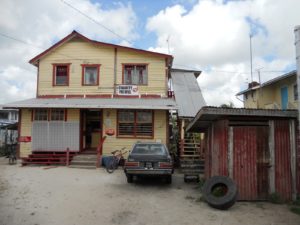By Isahak Basir, CCH
Charity, Pomeroon River, is said to have existed about 3,000 years ago. It has a population of over 5,000 and exhibits a well laid out housing scheme which is ever developing. This small township is the main intransit point leading to Region One, Venezuela and Trinidad and holds a rich cultural heritage.
Charity has all the basic amenities inclusive of banking and customs facility as well as road and river transport system. It is an exciting hub for tourists.

Originally, Charity was occupied by the Dutch settlers in 1640. In the area of Vryden Hope, cotton was cultivated. By 1840, the Portuguese occupied much of the abandoned Dutch plantations in the lower Pomeroon, and the area of Vryden Hope was divided and part of it was allocated as Charity by Alfred Surroung and Manuel Gouveia. These two families cultivated coffee and established the first steam-driven coffee mill in 1896. The intermarriages of Goveias, Vansluytman and Stolls saw the rapid economic and cultural development of this enclave. At that time, the Portuguese land owners were solely dependent on African and indentured laborers to cultivate their farm lands.
Access to the Pomeroon River was by the Tapakuma Lake or by sea until the road link between Dartmouth and Charity was discovered in 1908. The trail was discovered by three young hunters- Jerry Goveia, John Baharally and Gusy Surroung. It was an early morning expedition by these three trail blazers. The starting point was at the eastern end of the Charity coffee estate now known as “bamboo bridge.” After trailing for eight hours in swamps and tall grass teeming with wildlife, they saw rising smoke in a remote direction and followed it only to discover that they had reached an Essequibo civilization.

This happening was historic and the colonial government agreed to purchase the coffee estate of Charity and surrounding area for $8,000 Guyana dollars and commenced building the twelve kilometers road. The Portuguese community donated the school and church lands and Goveia’s house was used as the new administrative office.
The police station was relocated from Marlborough in the lower Pomeroon, and the Court Hall from Macaseema, upper Pomeroon, to Charity. The first school was built by the Catholic Church. The first medical centre was built in 1928 but was rebuilt to facilitate a hospital in 1935 when a pregnant mother gave birth to twin girls on the Charity market wharf. The first fuel outlet was made by the Raliims in 1938, opposite the site of the old hospital. During the World War 2, rubber was a scarce commodity, so rubber trees were planted in 1939. Some rubber trees are still around today.
Another legendary event was during the excavation of a Dutch canal in 1880 where an indentured shovelman found a jar of Dutch gold gilders at Charity. The estate owner, Timothy Vansluytman, made sure that the labourer was given special elite status for the rest of his life.
Charity is home to many landmarks. One such valuable landmark is the Jacklow Masjid, originally built in 1912 by Mohamed Sarafraz. It celebrates 100 years of existence this year. Sarafraz and his wife Gafooran came to Guyana from India as indentured Indians. Sarafraz came from the province of Punjab while Gafooran came from Uar Pradesh. They arrived in Berbice in 1885 and were bound for Hampton Court sugar plantation. After serving six years of being indentured servants, they were released and found temporary shelter at an abandoned estate at Plantation Beer Success in 1892.
The road link from Darthmouth to Charity in 1908 allowed easy access to the Pomeroon River. Sarafraz and fellow “Jahajees” in 1911 occupied several ten acres of land between Marndale and Siriki in the Pomeroon River. Sarafraz estate was known as “Rabeah.” His colleagues, Hamid, Refeedeen, Kallod and two others, supported the first troolie roof Masjid built by him in January 1912.
The mosque was rebuilt in 1924 and later in 1959 as its present structure. This Masjid serves an area of thirty miles where several Muslim families reside. All the Muslim calendar events are observed there. Subratee, who came as a small child with his parents from India in 1902, was a regular member of the Jamaat. He lived for 103 years. This gives evidence of the longevity of this landmark.
The traditional landmark, the huge silk cotton tree, still stands tall on the river side of Charity township. The bamboo bridge site, the rubber trees, and silk cotton tree should be preserved for posterity. (Photos by Marco Basir)



